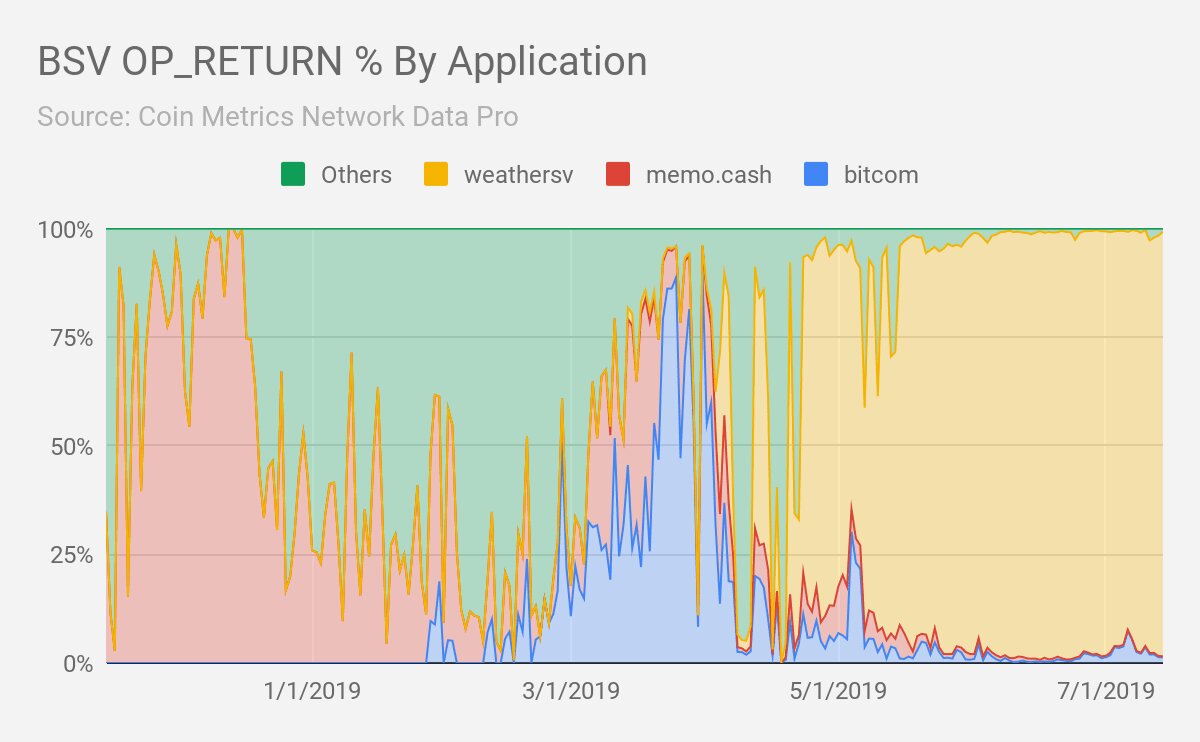Introduction
Welcome to the world of liquidity crypto! In the dynamic and ever-evolving realm of cryptocurrency, liquidity plays a crucial role in shaping the market landscape. Whether you are a crypto enthusiast or a casual observer, understanding liquidity is essential to navigate the volatile nature of this digital asset class effectively.
So, what exactly is liquidity? In simple terms, liquidity refers to the ability to convert an asset into cash quickly without causing a significant impact on its market price. It is a measure of how easy it is to buy or sell an asset, and it plays a vital role in determining the overall stability and efficiency of financial markets.
Cryptocurrency, on the other hand, is a digital or virtual form of currency that utilizes cryptography for secure financial transactions, control the creation of new units, and verify the transfer of assets. Unlike traditional fiat currencies, cryptocurrencies are decentralized and operate on a technology called blockchain, which ensures transparency and immutability.
Now, let’s dive into the exciting world of liquidity crypto. Liquidity crypto refers to the liquidity aspect within the cryptocurrency market. It represents the ease with which a particular cryptocurrency can be bought or sold in the marketplace, without significantly impacting its market price. The higher the liquidity of a cryptocurrency, the easier it is to trade and convert into other assets, such as fiat currencies or other cryptocurrencies.
Liquidity plays a crucial role in the crypto market for several reasons. Firstly, it ensures there is a ready market for buyers and sellers to transact at any given time, reducing the risk of getting stuck with an illiquid asset. Additionally, high liquidity attracts more participants, including institutional investors, who often require large trade sizes and easy entry and exit points.
The benefits of liquidity crypto are numerous. It provides market participants with greater flexibility, increased trading opportunities, and tighter bid-ask spreads, reducing costs associated with trading. Moreover, it enhances price discovery and minimizes price slippage during transactions, resulting in improved market efficiency.
However, achieving high liquidity in the crypto market is not without its challenges. Factors such as low trading volumes, limited exchange listings, market manipulation, and regulatory uncertainties can significantly impact liquidity levels. Therefore, it is crucial for market participants to understand how to measure liquidity effectively and employ strategies to improve liquidity in the crypto market.
In the following sections, we will delve into the importance of liquidity in the crypto market, explore the factors that influence liquidity, discuss the challenges faced, and provide strategies to enhance liquidity in the ever-evolving world of liquidity crypto.
What is Liquidity?
Liquidity is a fundamental concept in finance that refers to the ease with which an asset can be bought or sold in the market without significantly impacting its price. It is essentially a measure of how quickly an asset can be converted into cash. In the context of the crypto market, liquidity plays a crucial role in determining the stability and efficiency of trading.
When an asset, such as a cryptocurrency, has high liquidity, it means there are plenty of buyers and sellers ready to transact at any given time. This enables smooth and efficient trading, as there is a readily available market for participants to buy or sell their assets without causing significant price fluctuations. On the other hand, low liquidity means there are fewer buyers and sellers in the market, resulting in potential difficulties and delays in executing trades.
Two important factors determine the liquidity of an asset: the trading volume and the bid-ask spread. Trading volume refers to the total number of shares or tokens traded within a specific period. Higher trading volumes usually indicate higher liquidity, as there is more activity and market participation. The bid-ask spread, on the other hand, represents the difference between the highest price a buyer is willing to pay (bid) and the lowest price a seller is willing to accept (ask). A tighter bid-ask spread indicates higher liquidity, as the difference between buying and selling prices is minimal.
Liquidity has significant implications for market participants. High liquidity provides benefits such as lower transaction costs, increased trading opportunities, and higher market stability. It allows traders to enter and exit positions more easily, reduces the impact of large buy or sell orders on market prices, and facilitates better price discovery.
Moreover, liquidity plays a vital role in attracting institutional investors to the crypto market. Institutional investors often require a high level of liquidity to accommodate their large trade sizes. The presence of institutional investors, in turn, brings more liquidity to the market and can have a positive effect on overall market stability.
Overall, understanding liquidity is crucial for investors, traders, and other market participants in the crypto market. It helps them assess the ease of trading a particular cryptocurrency, mitigate risks associated with illiquid assets, and exploit opportunities arising from highly liquid markets. By monitoring liquidity metrics and staying informed about market conditions, participants can make more informed trading decisions and navigate the crypto market more effectively.
What is Crypto?
Crypto, short for cryptocurrency, refers to a digital or virtual form of currency that utilizes cryptography for secure financial transactions, control the creation of new units, and verify the transfer of assets. Unlike traditional fiat currencies issued and regulated by central authorities, cryptocurrencies operate on decentralized networks, making them immune to government manipulation and censorship.
At the heart of cryptocurrencies is the technology called blockchain. A blockchain is a decentralized ledger that records every transaction made with a cryptocurrency. It consists of a chain of blocks, with each block containing a list of transactions. This transparent and immutable nature of the blockchain ensures that transactions are secure and cannot be altered or tampered with.
Cryptocurrencies have gained significant popularity and attention in recent years due to their potential to disrupt traditional financial systems. They offer several advantages over traditional fiat currencies, such as faster and cheaper cross-border transactions, lower fees, enhanced privacy, and greater control over one’s finances.
Bitcoin, the first and most well-known cryptocurrency, was introduced in 2009 by an anonymous person or group of people under the pseudonym Satoshi Nakamoto. Since then, thousands of other cryptocurrencies, commonly known as altcoins, have been created, each with its unique features, purposes, and underlying technologies.
While Bitcoin remains the dominant cryptocurrency in terms of market capitalization and public awareness, other popular cryptocurrencies include Ethereum, Ripple, Litecoin, and Bitcoin Cash. These cryptocurrencies have gained traction for their innovative features, such as smart contracts, scalable transaction speeds, and more efficient consensus algorithms.
Investing in cryptocurrencies can be done in various ways. One common method is through cryptocurrency exchanges, where users can buy, sell, and trade different cryptocurrencies using fiat currencies or other cryptocurrencies as a medium of exchange. Additionally, individuals can also participate in Initial Coin Offerings (ICOs) or token sales, where new cryptocurrencies are launched and offered to investors in exchange for existing cryptocurrencies or fiat currencies.
It’s important to note that while cryptocurrencies offer exciting opportunities, they also come with risks. The crypto market is highly volatile, with prices fluctuating wildly in short periods. Regulatory challenges, security breaches, and scams pose additional risks for investors. Therefore, it is crucial to conduct thorough research, stay informed about market trends, and exercise caution when trading or investing in cryptocurrencies.
Overall, cryptocurrencies have revolutionized the financial landscape by introducing decentralized and secure digital currencies. Their widespread adoption and continued development have the potential to reshape traditional financial systems and empower individuals with greater control over their financial transactions and assets.
What is Liquidity Crypto?
Liquidity crypto refers to the liquidity aspect within the cryptocurrency market. It specifically focuses on the ease with which a particular cryptocurrency can be bought or sold in the marketplace, without significantly impacting its market price. In other words, it measures how quickly and efficiently an individual can convert a cryptocurrency into cash or other digital assets.
In the crypto market, liquidity plays a crucial role in shaping the trading experience and overall market dynamics. High liquidity means there are plenty of buyers and sellers actively trading a particular cryptocurrency, resulting in a more fluid and efficient market. On the other hand, low liquidity creates challenges for traders, as it may be difficult to find counterparty orders or execute trades at desired prices.
Liquidity in the crypto market is influenced by several factors, including the trading volume, the number of market participants, the number of exchange listings, and the overall market sentiment. Cryptocurrencies with high trading volumes and widespread adoption tend to have higher liquidity, as there is a greater pool of buyers and sellers actively engaged in trading those assets. Additionally, cryptocurrencies listed on multiple reputable exchanges usually have higher liquidity, as they attract a broader range of market participants.
The importance of liquidity crypto extends beyond convenience for traders. It serves as a measure of market depth and efficiency. High liquidity allows for more accurate price discovery, as the market reflects a diverse range of buying and selling orders. It also reduces price slippage, which occurs when large orders impact market prices significantly. This is particularly crucial for institutional investors or those trading large volumes, who prefer to minimize the impact their trades have on the market.
Furthermore, liquidity crypto is vital for the overall credibility and viability of a cryptocurrency. A lack of liquidity can lead to increased volatility, making it less attractive for potential investors. Additionally, illiquid cryptocurrencies may be prone to price manipulation, as large orders can have a more significant effect on their market prices.
As the crypto market continues to evolve, efforts are being made to enhance liquidity and improve trading experiences. Initiatives such as decentralized exchanges (DEX) aim to provide more transparent and secure trading environments, while liquidity mining programs incentivize users to provide liquidity to certain cryptocurrencies or trading pairs.
In summary, liquidity crypto refers to the ease with which a particular cryptocurrency can be bought or sold in the market without significantly impacting its market price. High liquidity is essential for a vibrant and efficient crypto market, providing benefits like accurate price discovery, reduced price slippage, and decreased market manipulation risks. As the crypto industry continues to grow, initiatives are being put in place to improve liquidity and create more user-friendly trading environments.
The Importance of Liquidity in the Crypto Market
Liquidity plays a vital role in the functioning and success of the crypto market. It refers to the ease with which a cryptocurrency can be bought or sold in the market without significantly impacting its price. The level of liquidity in the market has significant implications for traders, investors, and the overall stability of the crypto ecosystem.
One of the key reasons why liquidity is important in the crypto market is that it ensures there is a ready market for buyers and sellers to transact at any given time. Having high liquidity means that traders can easily buy or sell their crypto assets without facing significant hurdles or delays. This accessibility and speed of trading are essential for market participants to enter or exit positions as desired, reducing the risk of getting stuck with an illiquid asset.
Furthermore, high liquidity attracts more participants to the market, including institutional investors and large trading firms. Institutional investors often have significant capital and require robust liquidity to execute their trades efficiently. If the market lacks liquidity, it becomes challenging for institutional investors to enter or exit positions smoothly, thus deterring them from participating in the crypto market. In contrast, a highly liquid market attracts greater institutional interest, which can contribute to increased market depth and stability.
Another benefit of liquidity in the crypto market is improved price stability and tighter bid-ask spreads. When there is high liquidity, the gap between the highest price a buyer is willing to pay (bid) and the lowest price a seller is willing to accept (ask) tends to be smaller. This reduces the cost of trading and ensures that prices are more reflective of the true market value of the cryptocurrency. Additionally, higher liquidity can help reduce price slippage, which occurs when the execution price differs from the expected price due to market fluctuations and the size of the order.
Liquidity also contributes to the overall market efficiency and price discovery process. When there is ample liquidity, it allows for a diverse range of buying and selling orders, providing a more accurate reflection of supply and demand dynamics. This enables market participants to make more informed trading decisions based on the prevailing market sentiment and helps establish fairer market prices.
Moreover, liquidity is crucial for the growth and credibility of the crypto market. A liquid market attracts more participants, fosters a competitive trading environment, and enhances market depth. It also reduces the likelihood of price manipulation, as larger orders have less impact on the overall market price. These factors contribute to a more trustworthy and viable crypto market, expanding its appeal to both individual and institutional investors.
Overall, liquidity plays a fundamental role in the crypto market. It provides market participants with greater flexibility, increased trading opportunities, improved price stability, and enhanced market efficiency. As the crypto market continues to evolve, efforts to enhance liquidity and create vibrant trading environments will undoubtedly contribute to the continued growth and maturity of the crypto ecosystem.
Benefits of Liquidity Crypto
Liquidity is a vital component of a well-functioning cryptocurrency market. It brings several benefits to traders, investors, and the overall ecosystem. Let’s explore some of the key advantages of liquidity in the crypto market.
1. Enhanced Trading Opportunities: High liquidity in the crypto market offers a wide range of trading opportunities for participants. It allows traders to enter and exit positions quickly and efficiently, facilitating active trading strategies such as day trading or swing trading. With more buyers and sellers in the market, it increases the chances of finding counterparties for transactions and accessing a diverse range of crypto assets.
2. Tighter Bid-Ask Spreads: Liquidity often leads to tighter bid-ask spreads, which is the difference between the highest price a buyer is willing to pay and the lowest price a seller is willing to accept. A narrow bid-ask spread reduces the cost of trading, benefiting both buyers and sellers. It ensures that traders can execute transactions closer to the prevailing market price, minimizing slippage and reducing trading expenses.
3. Price Stability: Liquidity contributes to price stability in the crypto market. When there is high liquidity, larger trades have less impact on the overall market price. This reduces the volatility and sudden price fluctuations that can occur in illiquid markets. Price stability enhances market confidence and makes cryptocurrencies more appealing to risk-averse investors.
4. Improved Market Efficiency: Liquidity fosters market efficiency by enhancing price discovery and reducing information asymmetry. In a highly liquid market, a large number of participants actively engage in trading, leading to a more accurate reflection of supply and demand dynamics. This allows market participants to make more informed trading decisions based on real-time market sentiment, resulting in a more efficient allocation of resources.
5. Increased Market Depth: Liquidity brings greater market depth, which refers to the availability of buy and sell orders at various price levels. Deep markets provide traders with ample liquidity at different price points, increasing overall market resilience and accommodating larger trading volumes. Market depth attracts institutional investors and larger players, further improving market depth and stability.
6. Institutional Investment Interest: High liquidity is essential for attracting institutional investors to the crypto market. Institutional investors often require deep and liquid markets to accommodate their large trade sizes effectively. The presence of institutional investors brings more capital and credibility to the crypto market, increasing market liquidity and enabling further growth and maturity of the ecosystem.
7. Accessibility to Fiat Conversion: Liquidity in the crypto market helps facilitate prompt conversion of cryptocurrencies into fiat currencies or other digital assets. This accessibility is vital for participants who wish to convert their cryptocurrency holdings into traditional currencies for various purposes, such as making purchases or meeting financial obligations.
In summary, liquidity in the crypto market offers numerous benefits, including enhanced trading opportunities, tighter bid-ask spreads, price stability, improved market efficiency, increased market depth, institutional investment interest, and ease of fiat conversion. These advantages contribute to a more vibrant, trustworthy, and accessible crypto market, attracting a broader range of participants and supporting the growth and adoption of cryptocurrencies.
Factors Influencing Liquidity in Crypto
Liquidity is a crucial aspect of the crypto market, impacting the ease with which a cryptocurrency can be bought or sold without significantly affecting its market price. Several factors influence liquidity in the crypto market. Understanding these factors is essential for investors, traders, and market participants to make informed decisions and navigate the dynamic crypto landscape effectively.
1. Trading Volume: The trading volume, or the total amount of a cryptocurrency being traded within a specific time period, has a significant influence on liquidity. Cryptocurrencies with high trading volumes tend to have higher liquidity as there is a larger pool of buyers and sellers actively participating in the market. High trading volumes provide market participants with increased liquidity and more opportunities for executing trades at desired prices.
2. Market Participants: The number and diversity of market participants also impact liquidity in the crypto market. A higher number of participants, including individuals and institutions, contribute to greater liquidity by offering a wider range of buying and selling orders. The presence of institutional investors, who often trade larger volumes, can significantly increase liquidity and provide stability to the market.
3. Exchange Listings: The number and quality of exchange listings play a crucial role in determining the liquidity of a cryptocurrency. Cryptocurrencies listed on reputable and well-established exchanges tend to have higher liquidity, as they attract a broader range of traders and investors. The availability of multiple trading pairs and fiat on-ramps also contributes to liquidity by providing convenient pathways for users to access and trade cryptocurrencies.
4. Market Sentiment and Perception: Market sentiment and perception play a significant role in shaping liquidity in the crypto market. Positive news and developments can generate increased interest and activity, leading to higher liquidity. Conversely, negative events, regulatory uncertainties, or negative sentiment can result in decreased liquidity, as market participants may be hesitant to engage in trading activities.
5. Market Manipulation: The presence of market manipulation can have a detrimental effect on liquidity in the crypto market. Manipulative practices, such as pump-and-dump schemes or spoofing, can create artificial liquidity and deceive market participants. These practices can lead to increased volatility and a lack of trust, which may discourage traders and investors from participating in the market.
6. Regulatory Environment: The regulatory environment and legal frameworks in which cryptocurrencies operate can impact liquidity. Regulatory clarity and stable frameworks often instill confidence in market participants, attracting more participants and enhancing liquidity. Conversely, regulatory uncertainties or restrictive regulations can limit market participation and inhibit liquidity.
7. Network Scalability: The scalability of a cryptocurrency’s network can also influence liquidity. Cryptocurrencies with high transaction throughput and fast confirmation times are more likely to attract traders and investors, as they provide the capability for quick and efficient trading. Scalability challenges, such as network congestion or slow transaction confirmations, may result in reduced liquidity due to limitations on trading activity.
In summary, several factors influence liquidity in the crypto market, including trading volume, the number and diversity of market participants, exchange listings, market sentiment and perception, market manipulation, regulatory environment, and network scalability. A comprehensive understanding of these factors is key to assessing and navigating the liquidity dynamics in the crypto market, enabling participants to make informed trading decisions and adapt to the evolving market conditions.
How to Measure Liquidity in Crypto
Measuring liquidity in the crypto market is essential for traders, investors, and market participants to assess the ease with which a cryptocurrency can be bought or sold without significantly impacting its market price. While liquidity is a multifaceted concept, several metrics and indicators can provide insights into the liquidity of a cryptocurrency. Let’s explore some common methods used to measure liquidity in crypto.
1. Trading Volume: One of the most straightforward metrics for assessing liquidity is trading volume. Trading volume refers to the total number of shares or tokens traded within a specific time period. Higher trading volumes generally indicate higher liquidity, as there is more activity and a greater number of buyers and sellers in the market. Monitoring the trading volume allows market participants to understand the level of liquidity and the overall market interest in a particular cryptocurrency.
2. Order Book Depth: Order book depth provides information about the size and number of buy and sell orders at different price levels. It shows the liquidity available for a cryptocurrency and can indicate the depth of market participation. Higher order book depth indicates more liquidity, as there is a larger pool of orders available for traders to buy or sell at various price points. Analyzing the order book depth helps traders gauge liquidity and understand potential support and resistance levels.
3. Bid-Ask Spread: The bid-ask spread represents the difference between the highest price a buyer is willing to pay (bid) and the lowest price a seller is willing to accept (ask). A tighter bid-ask spread indicates higher liquidity, as the difference between buying and selling prices is minimal. A narrow spread reduces trading costs and allows for more efficient trading. Monitoring bid-ask spreads helps market participants assess the immediate liquidity available in the market for a particular cryptocurrency.
4. Slippage: Slippage refers to the difference between the expected execution price of a trade and the actual executed price. In a highly liquid market, slippage is minimal, as large orders have less impact on market prices. Low slippage indicates higher liquidity and better market efficiency. Monitoring slippage helps traders understand the liquidity impact of their trades and assess the potential costs associated with executing large orders.
5. Exchange Liquidity: Another approach to measuring liquidity is assessing the liquidity provided by specific exchanges. Some cryptocurrency exchanges provide liquidity metrics, such as trading volume, order book depth, and bid-ask spreads, allowing market participants to compare the liquidity of different markets for a particular cryptocurrency. Monitoring exchange liquidity helps traders identify the most liquid markets and select exchanges that offer tight spreads and high trading volumes.
6. Market Impact: Measuring market impact involves assessing the price movement resulting from a trade. In a highly liquid market, even large trades have minimal impact on prices, indicating high liquidity. On the other hand, in an illiquid market, even small trades can cause significant price movements, indicating low liquidity. Analyzing the market impact of trades helps market participants understand the liquidity profile of a cryptocurrency and the potential slippage associated with executing larger orders.
These are just a few methods used to measure liquidity in the crypto market. It is important to note that liquidity measurement is not an exact science and may vary depending on factors such as the specific cryptocurrency, market conditions, and the data sources used. Using a combination of these metrics and indicators provides a more comprehensive understanding of liquidity and enables market participants to make more informed trading decisions in the dynamic crypto market.
Challenges of Liquidity Crypto
Liquidity is a critical aspect of the crypto market, but it faces several challenges that can impact the ease with which cryptocurrencies can be bought or sold. These challenges affect market participants, including traders, investors, and even the development and adoption of cryptocurrencies. Let’s explore some of the key challenges of liquidity crypto.
1. Low Trading Volumes: Low trading volumes are a significant challenge to liquidity in the crypto market. Cryptocurrencies with low trading volumes may have limited buying and selling activity, making it more difficult for traders to execute trades at desired prices. Low trading volume can result in illiquid markets and increased price volatility, which can deter market participants and limit liquidity.
2. Limited Exchange Listings: The number and quality of exchange listings can impact liquidity. Cryptocurrencies that are listed on a few exchanges or lack exposure to reputable exchanges may face liquidity challenges. Limited exchange listings restrict market participation and reduce the ease with which traders can access and trade those cryptocurrencies, affecting liquidity levels.
3. Market Manipulation: Market manipulation poses a significant challenge to liquidity in the crypto market. Manipulative practices, such as pump-and-dump schemes, spoofing, and insider trading, can create artificial liquidity and deceive market participants. These activities can lead to increased price volatility and erode trust in the market, deterring traders and investors and impacting overall liquidity levels.
4. Regulatory Uncertainties: The regulatory environment surrounding cryptocurrencies is often complex and rapidly evolving, leading to uncertainties that can impact liquidity. Regulatory actions or lack of clarity can create market hesitations and uncertainties among market participants. Regulatory constraints can limit the participation of institutional investors and traditional financial institutions, thereby affecting liquidity in the crypto market.
5. Market Fragmentation: The fragmentation of the crypto market into numerous exchanges, each with its own liquidity pool, is a challenge for liquidity. Fragmented liquidity across different exchanges can make it difficult for traders to find counterparties for their trades, leading to limited liquidity and higher transaction costs. It can also lead to price differences among exchanges, which may present arbitrage opportunities but can also reduce market efficiency.
6. Lack of Standardized Metrics: The lack of standardized metrics for measuring and comparing liquidity in the crypto market is a challenge. Different exchanges and data providers may report liquidity metrics differently, making it difficult to get a comprehensive and accurate picture of liquidity. This can lead to challenges in assessing liquidity and comparing different cryptocurrencies or markets.
7. Volatile Market Conditions: The inherent volatility of the crypto market presents challenges for liquidity. Rapid price fluctuations, particularly in times of market stress or major news events, can disrupt trading activity and impact liquidity. Traders may hesitate to enter or exit positions due to the uncertainty and potential risks associated with highly volatile market conditions, reducing liquidity.
While these challenges of liquidity crypto exist, the crypto market continues to evolve and address these issues through various means, such as increased market regulation, the emergence of reputable exchanges, and the development of innovative liquidity solutions. Overcoming these challenges is essential to foster a liquid and robust crypto market that can support the growing demand and adoption of cryptocurrencies.
Strategies to Improve Liquidity in Crypto
Improving liquidity in the crypto market is a key objective for market participants and stakeholders, as it enhances trading efficiency, stability, and overall market health. Several strategies can be employed to boost liquidity and address the challenges faced in the crypto market. Let’s explore some effective strategies to improve liquidity in crypto.
1. Increase Trading Volume: One of the primary ways to improve liquidity is to increase trading volume. This can be achieved through various means, such as promoting market education, improving market transparency, and attracting more participants to the market. Encouraging active trading, providing incentives for liquidity provision, and offering competitive fee structures can also help drive trading volume and enhance liquidity.
2. Expand Exchange Listings: Increasing the number and quality of exchange listings can significantly improve liquidity in the crypto market. Making cryptocurrencies available on reputable and well-established exchanges not only increases market visibility but also attracts a broader range of traders and investors. Collaborating with exchanges to expand listings and streamline the listing process can help improve liquidity for cryptocurrencies.
3. Enhance Market Transparency: Transparency is crucial for building trust and attracting participants to the crypto market. Improving market transparency through initiatives such as standardized reporting of trading volume and order book information can help provide accurate and reliable data to traders and investors. Increased transparency fosters market confidence and enhances liquidity by reducing information asymmetry.
4. Combat Market Manipulation: Addressing market manipulation is essential for maintaining a credible and liquid crypto market. Regulatory measures and enforcement actions targeting manipulative practices can help deter fraudulent activities and protect market integrity. Implementing surveillance mechanisms and market transparency initiatives can aid in identifying and preventing market manipulation, fostering a more liquid trading environment.
5. Regulatory Clarity: A clear and supportive regulatory environment is crucial for attracting institutional investors and traditional financial institutions to the crypto market. Clear regulations provide market participants with confidence and certainty, leading to increased liquidity. Collaborative efforts between industry participants and regulatory authorities to establish appropriate regulations can help foster liquidity while addressing potential risks.
6. Improve Market Infrastructure: Investing in robust market infrastructure is crucial for facilitating liquidity in the crypto market. This includes building secure and efficient trading platforms, improving order matching algorithms, enhancing connectivity, and providing reliable market data. By strengthening the underlying infrastructure, market participants can trade more efficiently, leading to increased liquidity.
7. Develop Liquidity Incentives: Introducing liquidity incentives can encourage market participants to provide liquidity and enhance trading activity. These incentives can take the form of rebate programs, fee discounts, or staking mechanisms that reward liquidity providers. Creating liquidity mining programs and decentralized liquidity pools can also incentivize participants to contribute liquidity, enhancing overall market liquidity.
8. Market Collaboration: Collaboration between different stakeholders in the crypto market, including exchanges, regulators, developers, and market participants, is essential for improving liquidity. Sharing best practices, coordinating efforts, and fostering open dialogue can lead to innovative solutions and initiatives that address liquidity challenges effectively.
By implementing these strategies and promoting a collaborative approach, the crypto market can work towards improving liquidity, creating a more vibrant, efficient, and trustworthy trading environment for participants.
Conclusion
Liquidity plays a critical role in the cryptocurrency market, influencing the ease with which cryptocurrencies can be bought or sold without significantly affecting their market prices. It is a key factor that determines the overall efficiency, stability, and attractiveness of the crypto market for traders, investors, and other market participants.
In this article, we explored the concept of liquidity and its importance in the crypto market. Liquidity provides numerous benefits, including enhanced trading opportunities, tighter bid-ask spreads, improved market efficiency, and increased market depth. Moreover, liquidity in the crypto market is vital for attracting institutional investors, ensuring price stability, and promoting the overall growth and adoption of cryptocurrencies.
However, liquidity in the crypto market is not without its challenges. Factors such as low trading volumes, limited exchange listings, market manipulation, regulatory uncertainties, market fragmentation, lack of standardized metrics, and volatile market conditions pose significant challenges to liquidity. Overcoming these challenges requires collaborative efforts, innovative strategies, and regulatory measures.
To improve liquidity, various strategies can be employed, including increasing trading volumes, expanding exchange listings, enhancing market transparency, combating market manipulation, providing regulatory clarity, improving market infrastructure, developing liquidity incentives, and fostering market collaboration. By implementing these strategies, the crypto market can address liquidity challenges and create a more liquid, efficient, and trustworthy trading environment for participants.
As the crypto market continues to evolve, liquidity will remain a key focus area. It is crucial for market participants to continually monitor and adapt to liquidity dynamics, measure liquidity effectively using metrics such as trading volume, order book depth, bid-ask spread, slippage, and exchange liquidity. By understanding liquidity and implementing strategies to enhance it, traders, investors, and other stakeholders can navigate the crypto market more effectively and seize opportunities in this rapidly growing and dynamic asset class.

























